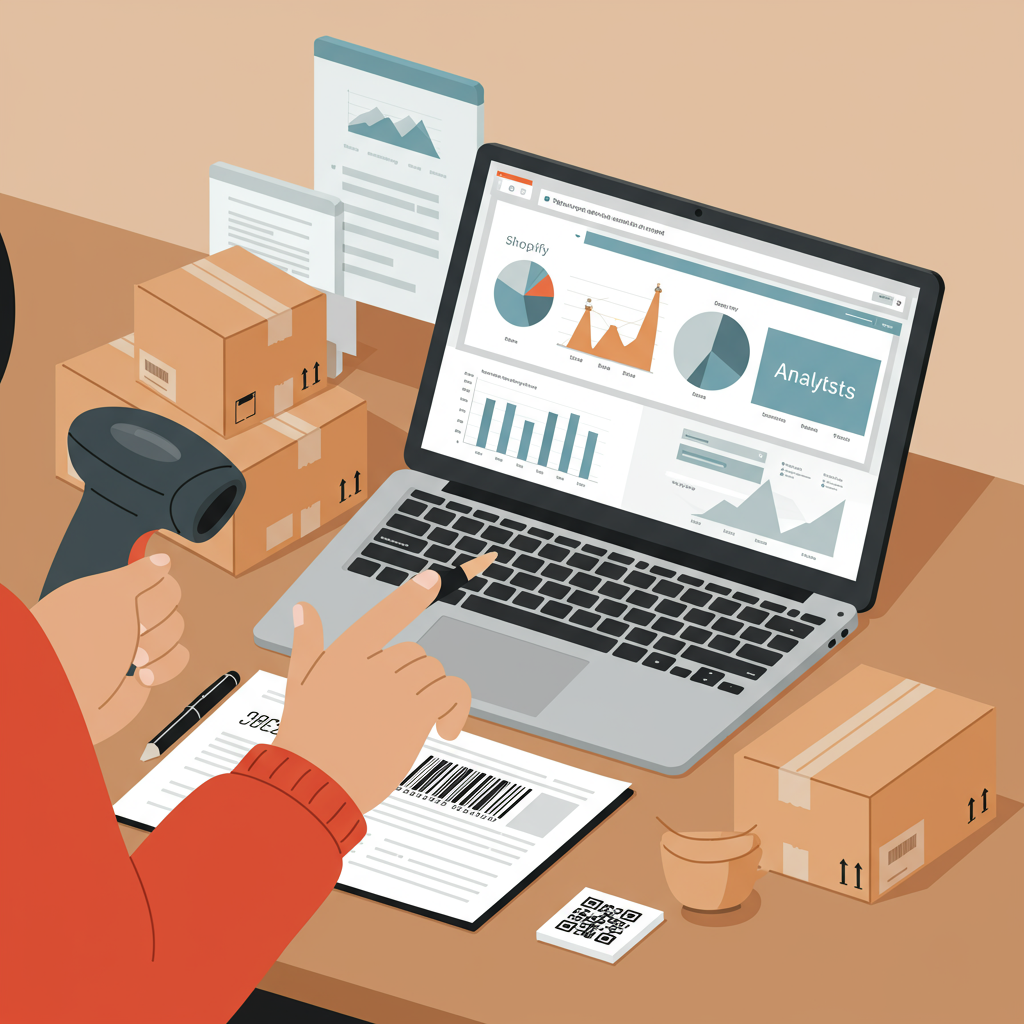Unlock the Power of Your Data to Optimize Stock Levels and Boost Profitability
As an online merchant, I know firsthand that managing inventory can feel like a constant balancing act.
Too much stock ties up capital and risks obsolescence, while too little leads to missed sales and unhappy customers.
The key to striking this balance lies in effective inventory forecasting.
Fortunately, if you’re running your store on Shopify, you already have a powerful tool at your fingertips: your Shopify reports.
These reports contain a treasure trove of data that, when properly analyzed, can provide invaluable insights into future demand.
My goal today is to walk you through how I use these built-in reports to make informed inventory decisions, helping you optimize your stock levels and improve your bottom line.
Let’s dive into the specific reports that are most relevant for forecasting.
First up are the **Sales Reports**. These are foundational.
I regularly check the “Sales by product” report. This report shows me which products are selling well and which are not.
By looking at sales over different time periods – daily, weekly, monthly, and even yearly – I can identify trends and patterns.
The “Sales by channel” report can also be insightful, especially if you sell across multiple platforms like your online store, POS, or social media.
Understanding where sales originate can help me allocate inventory more effectively across channels.
Next, I turn my attention to the **Inventory Reports**.
The “Inventory by product” report gives me a snapshot of my current stock levels, committed stock, and available stock.
This is crucial for knowing what I have on hand right now.
While not a direct forecasting tool, the “ABC analysis” (which you might need to create manually or with an app based on sales data) helps me categorize products by their value contribution.
My A-items are my top sellers, requiring closer monitoring and more precise forecasting. B-items are mid-range, and C-items are slow-movers.
I also consider **Profit Reports**, specifically the “Cost of goods sold” report. Knowing my COGS helps me understand the profitability of each product, which can influence my stocking strategy.
Finally, while less direct, **Customer Reports** can offer context. For instance, a high percentage of returning customers might indicate stable demand for certain products.
Now that we know which reports to look at, let’s outline the steps I take to use them for forecasting.
**Step 1: Gather Your Data.** I start by exporting relevant sales and inventory data from Shopify for a significant historical period, usually 6-12 months, or even longer if I have it.
**Step 2: Analyze Sales Trends.** This is where the magic happens. I look for consistent patterns.
Do sales spike during certain months, like holidays or specific seasons? This indicates seasonality.
Is there a general upward or downward trend in sales over time? This reveals growth or decline.
I also look for anomalies – sudden spikes due to a successful marketing campaign or drops due to an unexpected event. These need to be accounted for.
**Step 3: Understand Product Performance.** I identify my best-selling products and my slowest movers using the “Sales by product” report.
For best-sellers, I need to ensure I always have enough stock. For slow-movers, I might consider reducing future orders or even discontinuing them.
**Step 4: Account for Lead Times and Safety Stock.** This is critical. I know how long it takes for my suppliers to deliver new inventory (lead time).
I also factor in a safety stock – a buffer of extra inventory to guard against unexpected demand surges or supplier delays.
**Step 5: Consider External Factors.** My forecasting isn’t just about past sales. I think about upcoming marketing campaigns, planned promotions, or even broader economic trends.
Are there any industry-specific events or competitor activities that might impact my sales? I try to incorporate these qualitative insights.
**Step 6: Calculate Reorder Points and Quantities.** Based on my average daily sales (derived from historical data), lead times, and safety stock, I calculate when I need to reorder and how much.
A simple formula I use is: (Average Daily Sales * Lead Time in Days) + Safety Stock = Reorder Point.
The reorder quantity then depends on my desired stock level and supplier minimums.
**Step 7: Monitor and Adjust.** Inventory forecasting is not a one-time task. I regularly review my forecasts against actual sales.
If my actual sales are consistently higher or lower than my forecast, I adjust my future predictions and reorder points accordingly.
This iterative process helps me refine my accuracy over time.
Here are a few additional tips I’ve found helpful.
Don’t rely on just one report; combine insights from sales, inventory, and even customer data.
While Shopify reports are powerful, consider using a dedicated inventory management or forecasting app from the Shopify App Store for more advanced features if your business grows complex.
Communicate regularly with your suppliers about your forecasts. This helps them prepare and ensures smoother deliveries.
Start simple. Don’t get overwhelmed trying to predict every single variable perfectly. Focus on your core products first.
What do you think about these strategies? Have you found other Shopify reports particularly useful for your inventory forecasting?
By diligently using your Shopify reports, you can move beyond guesswork and make data-driven decisions about your inventory.
This not only saves you money by reducing carrying costs but also boosts customer satisfaction by ensuring products are always in stock.
Mastering inventory forecasting is a continuous journey, but with Shopify’s built-in tools, you’re well-equipped to succeed.






